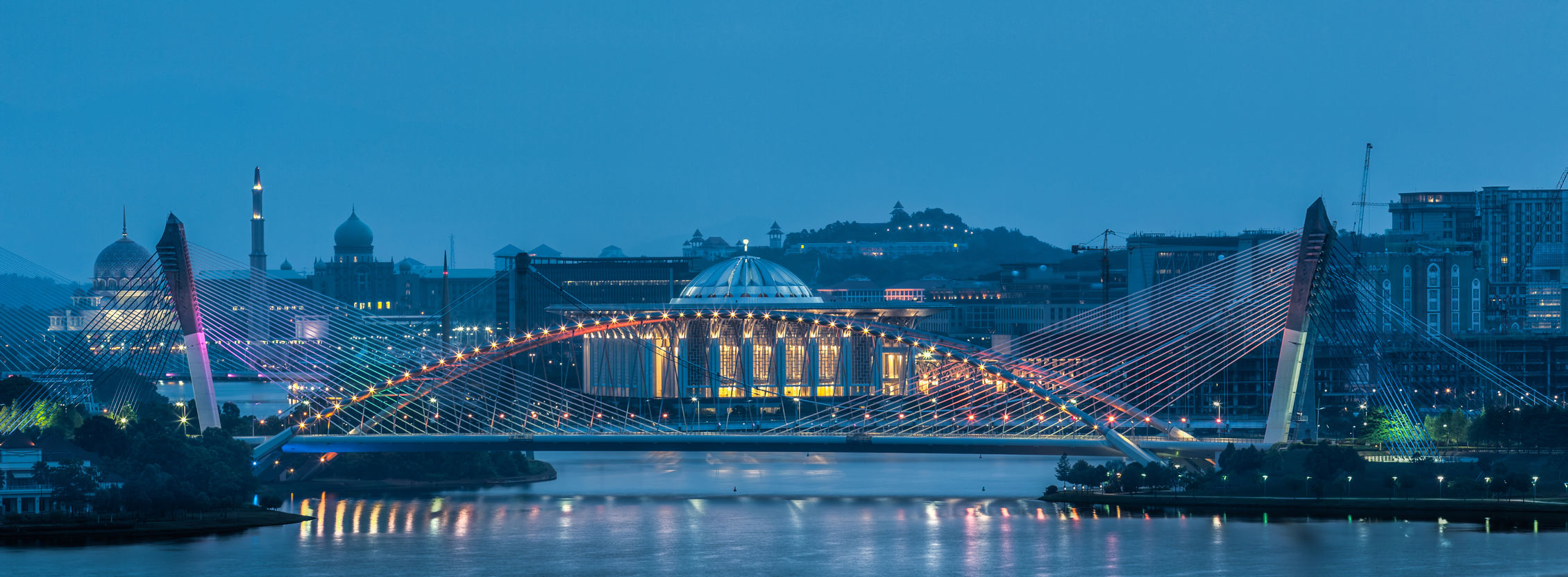Since the year 1974, Malaysia has yielded approximately 9 billion barrels of oil and 50 trillion cubic feet of gas from its recoverable reserves.[1] Based on the Reserves Life Index Calculation Malaysia’s petroleum reserves for oil and gas are projected to last for only another 15 years.[2] Just like most oil-producing areas, the remaining recoverable reserves in Malaysia were mostly located in remote areas or deeper water as most onshore or coastal oil fields had depleted or were undergoing a recovery phase.[3] With offshore oil drilling becoming the major source of oil supply in Malaysia the demand for offshore vessels and facilities has increased considerably. In this article, we will explore the types of offshore vessels and facilities in the oil and gas industry and set out the laws and regulations governing these vessels in Malaysia.
Oil Exploration and Drilling Vessels
Jack-up vessels, Drill Ships, and Semi-submersible vessels are three of the most common types of oil exploration and drilling vessels.
Drill ships are vessels fitted with an oil and gas drilling platform to drill into the seabed without it being anchored or attached to the sea floor. Drill Ships are held on the sea floor by the Dynamic Positioning (DP) system to maintain the ship’s position. The main advantage of Drill ships is that they are flexible, self-propelled and have a larger capacity to carry heavy equipment and supplies. They are therefore more suitable for ultra-deepwater exploration drilling.[4]
It is common that once the oil wells are drilled and completed by Drilling vessels, Semi-submersible vessels will be towed into position to develop the drilling. These Semi-submersible vessels have pontoons to keep them partially submerged which provides better ship stability and seakeeping as compared to Drill ships[5]. Hence, they are more commonly used in deep-sea development drilling.
For example, in 2002, a Spread-moored Semi-submersible vessel was being set offshore in Malaysia at a water depth of 2570 meters.[6]
The Jack-up vessel or is sometimes referred to as the Jack-up barge has a similar function as Drill Ships and Semi-submersible Vessels. The only difference is that they are anchored to the drilling side with their legs lowered to the sea bottom.
This allows the rig platform to rest above the water surface and provide a more stable drilling environment. The Jack-up vessels are usually used in relatively low depths areas up to 92 meters.[7]
FPSOs and FSOs Unit
Floating Production, Storage and Offloading (FPSO) unit as its name suggests is a floating facility or a vessel that caters for production, storage and offloading of offshore oil and gas before they are transported to a tanker for further refining. The FPSO floating production system would include the separation of extracted fluid into crude oils, water, natural gas and other residues. Once these crude oils and gas are processed, they will be stored in the cargo tanks and then be offloaded to tankers and pipelines heading ashore.[8] The only difference between the FPSO and Floating Storage and Offloading (FSO) unit systems is that FPSO is a floating production system while FSO has no production capabilities and is only involved in the storage and offloading process.[9]
Today, Malaysia is home to 20 FPSO vessels and three of the world’s top 10 leased FPSO operators.[10] FPSO Kikeh is Malaysia and Asia’s first and largest deepwater FPSO, built-in 2007. It had the largest external turret ever built for an FPSO worldwide and had the capacity of producing 120,000 barrels of oil per day and a storage capacity of 2 million oil barrels.[11]
Before this, oil and gas extraction in Malaysia was difficult inefficient and economically unviable because oil and gas rigs could only be built on piers or ramps connected to the lands where extraction could only be done from shallow fields, no more than a water depth of 50 meters.[12] Following the development of offshore drilling units and offshore production vessels like FPSO/FSO, oils and gas can now be easily extracted from water depths of almost 3000 meters.
Offshore Service Vessels (OSV)
Offshore Service Vessels (OSV) or Offshore Support Vessels are vessels that are designed specifically to provide support and ancillary services to offshore oil and gas developments. They are broadly categorised into three main categories, which are anchor handling vessels, supply vessels and construction support vessels.[13]
First, anchor-handling vessels would include anchor-handling tug and supply vessels (AHTS) and anchor-handling tugs (AHT).
The major feature of these vessels is to supply tugs and anchors for the towing and tugging of oil rigs and to secure them in place.[14] Further, they also serve Vessels (ERRVs) to prevent or mitigate possible emergencies like fire, explosion, collision, and oil spillage.[15]
Next, supply vessels on the other hand are vessels designed to conduct less complex duties like transporting essential equipment, supplies, materials and manpower from land to offshore rigs and ships for high-seas operations. The type of vessels under this category would include, platform supply vessels (PSV), straight supply vessels (SSV) and fast crew boats.[16]
Thirdly, the construction support vessels are ships that primarily aid in constructing and maintaining offshore structures.
The Diving Support Vessel and Crane Vessel are two of the examples under this category. Diving support vessels are used as a floating base for underwater diving operations. They are equipped with facilities to support divers in their work beneath the water surface. Whereas, for crane vessels, they are specialised in lifting heavy loads for offshore constructions and operations.[17]
Laws and Regulations
The supply and use of offshore vessels in the oil and gas industry in Malaysia are regulated by a few legislations, namely the Petroleum Development Act 1975, the Environmental Quality Act 1974 and the Merchant Shipping Ordinance 1952.
The Petroleum Development Act 1975 (PDA 1975)[18] is the main piece of legislation that oversees Malaysia’s oil and gas sector. By virtue of this legislation, Petroliam Nasional Berhad (PETRONAS) is granted with full ownership, and the exclusive rights, powers, liberties, and privileges to explore and utilise any petroleum resources whether they are found onshore or offshore.
Additionally, PETRONAS is also authorized by the PDA 1975 to issue and grant licenses to contractors for upstream-related businesses or services.
Therefore, before any contractors can commence upstream activities including exploring, drilling, and extracting crude oils and gas, they will be required to enter into either a production sharing contract (PSC) or risk service contracts (RSCs) with PETRONAS.
Under the purview of PETRONAS, there are two types of standard licenses, i.e., License to Explore and License to Supply. The License to Explore would grant contractors the rights to explore, exploit, win and obtain the oil and gas in Malaysia and on the other hand, the License to Supply would grant contractors the rights to supply equipment and facilities in relation to these exploration activities.
The operation of the offshore vessels mentioned above, would therefore fall under the category of supply and must obtain a License to Supply from PETRONAS before they could commence any upstream activities.[19]
The legislation governing marine oil pollution includes the Environmental Quality Act 1974 (EQA 1974)[20] and Merchant Shipping (Oil Pollution) (Amendment) Act 2011[21], the latter incorporates into Malaysian law the Civil Liability[22] and Fund Conventions[23]. Amongst the notable pollution incidents which occur in Malaysian waters include the collision between the Japanese Tanker Nagasaki Spirit and Container Ship Ocean Blessing off Langkawi waters[24], collision between Orapin and Evoikos, the capsizing of the vessel An Tai at Northport berth. (Our Partner Philip Teoh acted for parties involved in these incidents)
Finally, the Merchant Shipping Ordinance Act 1952 (MSO 1952) is the principal legislation governing the licensing of all vessels in Malaysia. All vessels engaged in providing shipping services in the Malaysian domestic shipping sector must be licensed by the Domestic Shipping Licensing Board under the Ministry of Transport.[25]
Since 1st January 1980, under Malaysia’s cabotage policy, only Malaysian- flagged (registered) vessels are allowed to be utilised for domestic shipping. Domestic shipping would include the provision of services other than fishing in the Federation waters or the exclusive economic zone including the provision of services and facilities for the oil and gas sector.[26] Hence, Malaysian-flagged (registered) Offshore vessels are usually much preferred by PETRONAS for usage in the upstream sector.

- Malaysia Petroleum Management, ‘Overview of Production in Malaysia’ <https://www.petronas.com/mpm/malaysia-e-p/production#:~:text=Currently%2C%20Malaysia%20produces%20660%2C000%20barrels,three%2Dfourths%20of%20the%20mix.> accessed 18 January 2024.
- Nuradzimmah Daim and Mohamed Basyir, ‘M’sia has 15yrs of petroleum reserves left, can last up to 40 with right tech, investment’ <https://www.petronas.com/mpm/malaysia-e-p/production#:~:text=Currently%2C%20Malaysia%20produces%20660%2C000%20barrels,three%2Dfourths%20of%20the%20mix.> accessed 18 January 2024.
- Pritish Bhattacharya and Francis E. Hutchinson, ‘Malaysia’s Oil and Gas Sector: Constant Expectations despite Diminishing Returns’ <https://www.iseas.edu.sg/articles-commentaries/iseas-perspective/2022-21-malaysias-oil-and-gas-sector-constant-expectations-despite-diminishing-returns-by-pritish-bhattacharya-and-francis-e-hutchinson/> accessed 18th January 2024.
- MI News Network, ‘What is a Drill Ship?’ <https://www.marineinsight.com/types-of-ships/what-is-a-drill-ship/> accessed 18 January 2024.
- Yong Bai, Qiang Bai, ‘Subsea Engineering Handbook’<https://www.sciencedirect.com/topics/earth-and-planetary-sciences/jack-up-platform#:~:text=A%20jackup%20unit%20is%20self,up%20to%20350%20ft%20deep.> accessed 18 January 2024.
- Offshore, ‘Semisubmersible mooring record set off Malaysia’ <https://www.offshore-mag.com/drilling-completion/article/16779028/semisubmersible-mooring-record-set-off-malaysia> accessed 19 January 2024.
- Caralb News, ‘What are the types of different offshore platforms?’ <https://www.caralb.com/2021/05/31/offshore-platforms/> accessed 19 January 2024.
- Adam Muspratt, ‘Guide to FPSO (Floating Production Storage and Offloading)’ <https://www.oilandgasiq.com/fpso-flng/articles/guide-to-floating-production-storage-and-offloading-fpso> accessed 19 January 2024.
- James Chen ‘Floating Production Storage and Offloading (FPSO) Overview’ <https://www.investopedia.com/terms/f/fpso-floating-production-storage-and-offloading.asp> accessed 19 January 2024.
- Malaysian Petroleum Resources Corporation, ‘Malaysian Fpso Players Set To Capitalise On Stabilising Demand’ <https://www.mprc.gov.my/thought-leadership/malaysian-fpso-players-set-to-capitalise-on-stabilising-demand> accessed 19 January 2024.
- FPSO Ventures, ‘FPSO Kikeh’ <https://www.fpsoventures.com/experiences/fpsokikeh/> accessed 19 January 2024.
- Ibid (n 8).
- Sarah Whiteford, ‘What is an Offshore Support Vessel, or OSV?’ <https://www.onesteppower.com/post/what-is-an-offshore-support-vessel-or-osv> accessed 19 January 2024.
- MI News Network, ‘What are Anchor Handling Tug Supply Vessels (AHTS)?’ <https://www.marineinsight.com/types-of-ships/what-are-anchor-handling-tug-vessels-aths/> accessed 19 January 2024.
- Icon offshore, ‘Anchor Handling Tug & Supply Vessels (AHTS)’ <https://iconoffshore.com.my/anchor-handling-tug-supply-vessels/> accessed 21 January 2024.
- Ibid (n13).
- Raunek, ‘What are Offshore Vessels?’ <https://www.marineinsight.com/types-of-ships/what-are-offshore-vessels/> accessed 21 January 2024.
- Petroleum Development Act 1975.
- Mohammad Ashraf Mohamed Sopiee, ‘Contracting for Oil and Gas Sector in Malaysia – Understanding SWEC Code in Malaysia’ <https://www.azmilaw.com/insights/contracting-for-oil-and-gas-sector-in-malaysia-understanding-swec-code-in-malaysia/> accessed 21 January 2024.
- Environmental Quality Act 1974.
- Merchant Shipping (Oil Pollution) (Amendment) Act 2011.
- S.3A Merchant Shipping (Oil Pollution) (Amendment) Act 2011.
- Sharmini Murugason, ‘Malaysia – recent legal developments’, <https://www.standard-club.com/fileadmin/uploads/standardclub/Documents/Import/publications/bulletins/split-articles/2014/1557276-malaysia-recent-legal-developments.pdf> accessed 22 January 2024.
- The Nagasaki Spirit’; Owners of Cargo Laden or Lately Laden on board the Ship or Vessel ‘Ocean Blessing’ v Owners of the Ship or Vessel ‘Nagasaki Spirit’ & Anor (No. 2) [1994] 1 SLR 445.
- James Monteiro and Vishal Kumar, ‘Oil & Gas Laws and Regulations Malaysia’ <https://iclg.com/practice-areas/oil-and-gas-laws-and-regulations/malaysia#:~:text=The%20Petroleum%20Development%20Act%2C%201975,resources%2C%20both%20onshore%20and%20offshore%2C> accessed 21 January 2024.
- Merchant Shipping Ordinance Act 1952.






